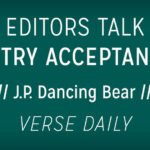Dance has been an integral part of my life since the earliest days, a constant thread weaving through childhood memories in Flushing, Queens – a place also known as the home of The Nanny. Even before conscious memory, photos capture a toddler with a black bowl cut and pink leotard, arms gracefully reaching for the sky in ballet’s fifth position. Back then, dance was simply fun, a joyful expression. Little did I know it would evolve into something profoundly meaningful, shaping my identity and experiences.
As I grew, dance transformed into exercise, though it never felt like a chore. It was a source of confidence, conquering stage fright to perform the running man under the bright, hot lights of the high school auditorium during my first recital, the energy of C+C Music Factory fueling my moves. Dance fostered friendships, partnering with trusted peers in mermaid-scaled nude bodysuits for en pointe duets set to Enya’s soothing melodies. We also embraced playful rebellion, donning hot pink wigs and pleather jumpsuits for a cheeky Rolling Stones medley – perhaps a touch too saucy for our age. Dance became intertwined with ambition, the subject of my college essays, and leadership when I captained my high school’s Rockettes-inspired kick line. It was a path to self-discovery, soundtracked by Britney Spears’s “Toxic” in my 20s, danced on banquettes and in crowded summer houses, and overflowing with pure joy at my wedding. Dance was also art, sharing moments of wonder with my dad at Swan Lake beneath the dazzling chandeliers of the Metropolitan Opera House. As life became busier, attending dance class became a precious act of self-preservation, a chance to reconnect with myself amidst the demands of adulthood, a space often sacrificed when parents dedicate themselves to their children’s interests.
Then, public dancing came to a halt last year. Yet, the rhythm persisted. My kitchen became my dance floor, most notably for an impromptu performance to BTS’s “Dynamite” with my daughter on Inauguration Day, or joyful prancing to Dua Lipa while tackling mountains of laundry. Until recently, a Friday night had passed without going out dancing for over a year. The drought broke with Social! The Social Distance Dance Club at the Park Avenue Armory, a unique performance-art experience envisioned by Talking Heads legend David Byrne, renowned Broadway choreographer Steven Hoggett, and visionary set designer Christine Jones. Social! invited a hundred individuals to express themselves through movement in “their own socially distanced spotlights” – a dream come to life in the vast Wade Thompson Drill Hall. The allure was amplified by Byrne’s presence, a family icon. A personal dance highlight remains the unforgettable moment during American Utopia on Broadway when Byrne encouraged the audience to rise and dance during “Burning Down the House.” Even my young son recognizes the lyrics—“take a look at these hands”—from “Born Under Punches.”
Preparing for this night out felt like revisiting cherished rituals – blasting LCD Soundsystem and Lady Gaga, slipping into tights, over-the-knee boots, and a touch of blue mascara. However, unlike past preparations, there were no pre-dance drinks, as I was rushing directly from my children’s swim class. Instead of a typical bouncer, a shallow nasal swab awaited me at the Park Avenue Armory – the mandatory rapid COVID test for every attendee. Anxiety and anticipation mingled as I sat in a folding chair in the waiting area, an attendant announcing results via headset. The diverse crowd was subtly stylish: a woman in head-to-toe neon pink with a high blonde topknot sat ahead, and further in front, a sophisticated lady reminiscent of Sex and the City’s Bunny MacDougal, adorned in rhinestone ballet flats. In the past, at children’s birthday parties, my blue mascara might have drawn curious, perplexed glances. Here, it felt perfectly at home, part of the unspoken vogue of the evening, a celebration of individual style and the unifying power of dance.

